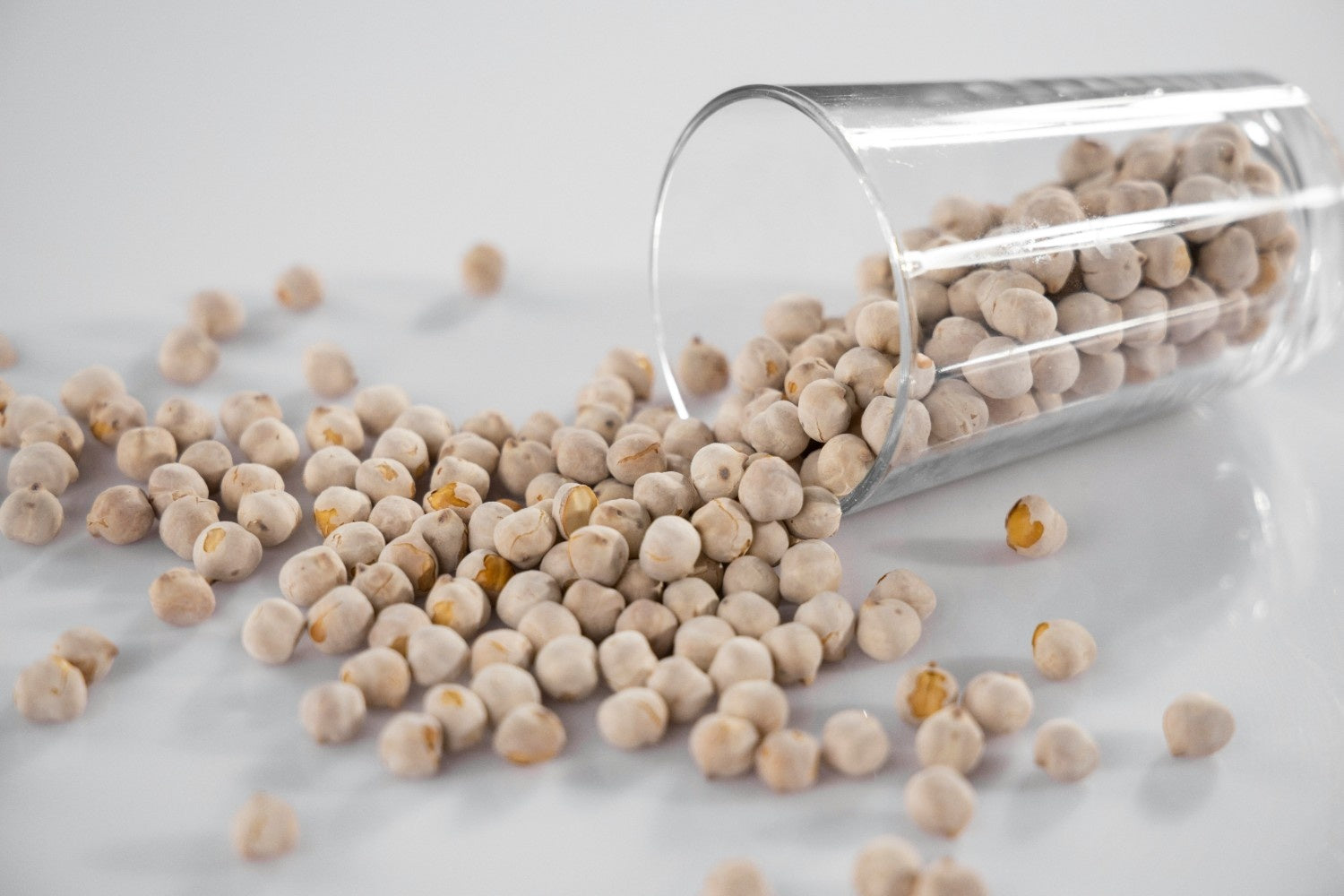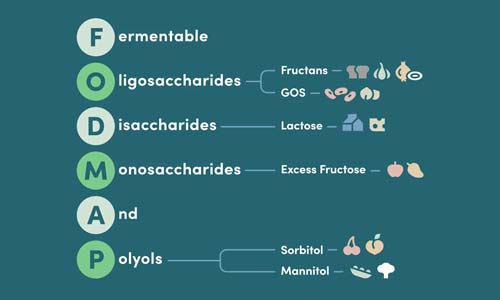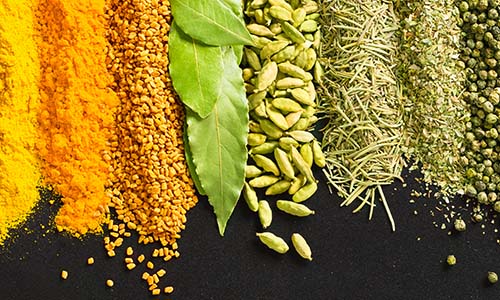Are Chickpeas Low FODMAP? Proven Portion Guide

If you're navigating the low FODMAP diet to manage IBS symptoms, you've likely wondered about chickpeas. These protein-packed legumes are a pantry staple for many, but their FODMAP status can be confusing. The good news? You don't have to eliminate chickpeas entirely—it's all about knowing the right portion size and preparation method.
Key Takeaways
- Chickpeas are a common legume that may raise questions for those on a low FODMAP diet.
- Their FODMAP content can be managed by controlling portion size and preparation.
- It is not necessary to completely eliminate chickpeas from a low FODMAP diet.
- Understanding the right portion helps in enjoying chickpeas without triggering IBS symptoms.
Table of Contents
Quick Answer
Yes, chickpeas can be low FODMAP when properly prepared. Canned chickpeas that are rinsed and drained are considered low FODMAP in portions up to ¼ cup (42g) per serving. However, dried chickpeas and chickpea flour are high FODMAP and should be avoided during the elimination phase.
At Gourmend Foods, we understand how challenging it can be to maintain flavorful, satisfying meals while managing digestive sensitivities. That's why we're here to help you navigate the complexities of FODMAPs with science-backed guidance that keeps your taste buds happy and your gut comfortable.
Understanding the Low FODMAP Diet
What Are FODMAPs?
FODMAPs stands for Fermentable Oligosaccharides, Disaccharides, Monosaccharides, and Polyols—a group of short-chain carbohydrates that can trigger digestive discomfort in sensitive individuals. These compounds aren't inherently "bad," but they can be poorly absorbed in the small intestine.
Key Point: When FODMAPs reach the colon undigested, they ferment rapidly, producing gas and drawing water into the intestines—leading to bloating, cramping, and other IBS symptoms.
The four main categories include:
- Oligosaccharides
- Found in wheat, rye, legumes, and certain vegetables like onion bulbs
- Disaccharides
- Primarily lactose in dairy products
- Monosaccharides
- Excess fructose in some fruits and sweeteners
- Polyols
- Sugar alcohols in stone fruits and artificial sweeteners
Purpose and Phases of the Low FODMAP Diet
The low FODMAP diet isn't a permanent lifestyle—it's a systematic approach to identifying your personal triggers. Research shows this method can reduce IBS symptoms in up to 75% of people when followed correctly.
The diet consists of three distinct phases:
- Elimination Phase (2-6 weeks): Strictly avoid high FODMAP foods to allow your digestive system to settle
- Reintroduction Phase (6-10 weeks): Systematically test individual FODMAP groups to identify personal tolerance levels
- Personalization Phase (ongoing): Create a customized eating plan based on your individual triggers and tolerances
Expert Tip: The reintroduction phase is crucial—many people can tolerate moderate amounts of certain FODMAPs once their symptoms have settled. Working with a registered dietitian during this phase ensures you don't unnecessarily restrict your diet long-term.
Low FODMAP Foods You Can Enjoy

One of the most empowering aspects of the low FODMAP diet is discovering just how many delicious, nutritious foods you can enjoy. Rather than focusing on restrictions, let's explore the abundance of flavor-packed options available.
Fruits That Support Gut Health
Fresh fruits provide essential vitamins, minerals, and fiber while keeping your digestive system comfortable. The key is choosing varieties that are naturally lower in excess fructose and polyols.
- Citrus favorites: Oranges, mandarins, and limes (avoid grapefruit in large portions)
- Tropical options: Pineapple, kiwi, and passionfruit add exotic flair
- Berry delights: Strawberries and raspberries are naturally portion-friendly
- Melon varieties: Honeydew and cantaloupe provide refreshing sweetness
- Banana basics: Firm, unripe bananas are your best bet
Portion Consideration: Stick to one serving of fruit per meal or snack to avoid FODMAP stacking, where multiple low FODMAP foods combine to create a high FODMAP load.
Dairy and Dairy Alternatives
Lactose intolerance and FODMAP sensitivity often overlap, but you don't have to give up all dairy. Many aged cheeses are naturally low in lactose, making them gut-friendly choices.
Low FODMAP dairy options include:
- Hard cheeses: Cheddar, Swiss, and Parmesan
- Fresh options: Mozzarella and feta cheese
- Strained Greek yogurt (small portions)
- Lactose-free milk and yogurt
Grains and Cereals for Sustained Energy
Contrary to popular belief, many grains fit beautifully into a low FODMAP eating plan. These provide the complex carbohydrates your body needs for sustained energy without digestive distress.
Our low FODMAP recipe collection features creative ways to use these grain staples:
- Rice varieties: Both white and brown rice are completely FODMAP-free
- Oats: Rolled oats make excellent breakfast bases and baking ingredients
- Quinoa: This protein-rich pseudocereal works in both sweet and savory applications
- Gluten-free alternatives: Rice flour and oat flour for baking projects
At a Glance: When building low FODMAP meals, focus on what you can include rather than what you're avoiding. This mindset shift makes the diet feel abundant rather than restrictive.
Beans and Legumes on a Low FODMAP Diet
Why Beans and Legumes Can Be Challenging
Beans and legumes present a unique challenge for those following a low FODMAP diet. These nutritional powerhouses are naturally high in galacto-oligosaccharides (GOS) and fructans—two types of FODMAPs that can trigger digestive symptoms in sensitive individuals.
Key Fact: The human digestive system lacks the enzymes needed to break down GOS and fructans in the small intestine, which means these compounds travel to the colon where they ferment, producing gas and potentially causing bloating, cramping, and other IBS symptoms.
However, this doesn't mean you need to eliminate all beans and legumes from your diet. The secret lies in understanding how different preparation methods and portion sizes affect FODMAP content.
Low FODMAP Beans and Legumes You Can Enjoy
The good news is that several beans and legumes can fit comfortably into your low FODMAP eating plan when prepared correctly and consumed in appropriate portions.
- Canned chickpeas: Safe up to ¼ cup (42g) when rinsed and drained
- Canned lentils: Similar to chickpeas, ¼ cup serving maintains low FODMAP status
- Firm and extra-firm tofu: The soy whey removal process eliminates most FODMAPs
- Green beans: Technically a legume, safe up to 75g per meal
- Tempeh: Fermentation reduces FODMAP content (small portions)
Processing Makes the Difference: Canning and rinsing significantly reduce FODMAP content because water-soluble oligosaccharides leach into the canning liquid, which you discard when draining.
High FODMAP Beans to Limit or Avoid
During the elimination phase, these beans should be avoided or consumed only in very small amounts:
- Black beans
- Only 2 tablespoons of canned, rinsed beans are considered low FODMAP
- Kidney beans
- Limit to 12g (about 1 tablespoon) of canned, rinsed beans
- Pinto beans
- Similar restrictions to black beans—very small portions only
- Baked beans
- Usually high FODMAP due to navy beans and added sweeteners
- Dried beans (any variety)
- Higher FODMAP content than canned versions; avoid during elimination
Smart Strategies for Including Beans and Legumes
Success with beans and legumes on a low FODMAP diet comes down to preparation technique and portion awareness. Here are our tested strategies:
Effective Approaches
- Choose canned varieties and rinse thoroughly under cold water
- Measure portions carefully using a measuring cup, not estimation
- Pair with low FODMAP vegetables to avoid FODMAP stacking
- Use Gourmend low FODMAP seasonings instead of garlic-based flavors
Common Mistakes
- Using dried beans without proper soaking and preparation
- Consuming multiple servings in one meal
- Adding high FODMAP ingredients like onion bulbs or garlic
- Ignoring portion sizes during the elimination phase
Pro Tip: Consider digestive enzymes containing alpha-galactosidase, which can help break down some of the oligosaccharides in beans. While not a substitute for proper portioning, they may provide additional digestive support.
Special Focus: Chickpeas and the Low FODMAP Diet
Why Chickpeas Matter for Digestive Health
Chickpeas deserve special attention in the low FODMAP conversation because they're nutritional powerhouses that many people rely on for plant-based protein, fiber, and essential minerals like folate and iron. For those following vegetarian or vegan diets, chickpeas often serve as a cornerstone ingredient.
Nutritional Snapshot: A ¼ cup serving of canned chickpeas provides approximately 6g of protein, 5g of fiber, and 15% of your daily folate needs—all while remaining low FODMAP when properly prepared.
Beyond basic nutrition, chickpeas contain prebiotics that can actually support gut health in individuals who tolerate them well. The key is finding your personal sweet spot during the reintroduction phase.
How Processing Affects FODMAP Content
The FODMAP status of chickpeas depends entirely on how they're processed and prepared. Understanding these differences is crucial for successful inclusion in your low FODMAP meal plan.
| Chickpea Type | FODMAP Status | Safe Serving Size | Preparation Notes |
|---|---|---|---|
| Canned, rinsed & drained | Low FODMAP | ¼ cup (42g) | Rinse for 30 seconds under cold water |
| Dried, home-cooked | High FODMAP | Avoid during elimination | Oligosaccharides remain concentrated |
| Chickpea flour | Likely high FODMAP | Not tested, avoid | No leaching process occurs |
| Roasted chickpeas (store-bought) | Variable | Check if made from canned | Depends on starting material |
Quick Answer: The canning process allows water-soluble FODMAPs to leach into the liquid, which you discard when draining. This is why canned chickpeas have a dramatically different FODMAP profile than dried ones.
Creative Ways to Use Low FODMAP Chickpeas
Once you understand the portion guidelines, chickpeas become incredibly versatile in your low FODMAP kitchen. Our recipe conversion tool can help you adapt your favorite chickpea dishes to fit your dietary needs.
Here are some tested applications that work beautifully within FODMAP guidelines:
Mediterranean Chickpea Salad
Combine your ¼ cup serving of rinsed chickpeas with cucumber, bell peppers, and feta cheese. Dress with olive oil, lemon juice, and fresh herbs like parsley or chives for an onion-like flavor without the FODMAPs.
Protein-Packed Grain Bowls
Layer chickpeas over quinoa or brown rice with roasted vegetables like carrots, zucchini, and red bell peppers. Finish with a drizzle of tahini dressing and a sprinkle of our low FODMAP seasoning blends.
Crispy Roasted Chickpea Snacks
Toss your portion of drained chickpeas with olive oil and spices, then roast at 400°F until crispy. Season with paprika, cumin, or our specially formulated spice blends that deliver complex flavor without high FODMAP ingredients.
Flavor Enhancement: Since you can't use traditional garlic or onion bulbs, rely on herbs like chives, scallion greens, and quality spice blends to build layers of flavor. Our Gourmend seasonings are specifically designed to provide that savory depth without FODMAP concerns.
Reintroducing Chickpeas: Testing Your Tolerance
During the reintroduction phase, you'll systematically test your tolerance to larger portions of chickpeas and potentially explore chickpea flour or dried varieties. This process should be done under professional guidance to ensure accurate results.
The typical reintroduction protocol for chickpeas involves:
- Day 1: Consume ¼ cup canned chickpeas (your established safe amount)
- Day 2: Increase to ½ cup canned chickpeas, monitor symptoms
- Day 3: Try ¾ cup if previous amounts were well-tolerated
- Assessment: Wait 2-3 days between tests to accurately gauge your response
Many people discover they can tolerate moderate amounts of chickpeas once their digestive system has settled during the elimination phase. This is why the low FODMAP diet is temporary—it's about finding your personal threshold, not permanent restriction.
For more insights on how to expand your low FODMAP options, check out our learn blog for science-backed tips and strategies.
Mastering Chickpea Preparation for Low FODMAP Success
Step-by-Step Preparation Guide
Proper preparation is the difference between digestive comfort and potential symptoms when including chickpeas in your low FODMAP diet. Based on our testing with Gourmend Foods customers, following these precise steps ensures optimal FODMAP reduction.
- Choose the right product: Select canned chickpeas in water, avoiding varieties with added seasonings or preservatives that might contain high FODMAP ingredients
- Drain completely: Pour the entire contents into a fine-mesh strainer, allowing all liquid to drain for 30 seconds
- Rinse thoroughly: Run cold water over the chickpeas for 30-45 seconds, stirring gently with your hand to ensure all surfaces are rinsed
- Measure precisely: Use a proper measuring cup to portion exactly ¼ cup (42g) per serving
- Store properly: Refrigerate unused portions in fresh water for up to 3 days, or freeze for longer storage
Critical Detail: The rinsing step removes up to 40% of remaining water-soluble FODMAPs, making it non-negotiable for low FODMAP success. Never skip this step, even if you're planning to cook the chickpeas further.
Storage and Meal Prep Strategies
Efficient meal preparation with chickpeas requires understanding how to maintain their low FODMAP status while maximizing convenience. Our customers have developed these proven strategies for incorporating chickpeas into weekly meal prep routines.
- Batch Preparation Method
- Rinse and drain multiple cans at once, then portion into ¼ cup servings using small containers or ice cube trays. This prevents over-consumption and streamlines meal assembly.
- Flavor Infusion Technique
- After rinsing, marinate chickpeas in low FODMAP-friendly liquids like lemon juice, olive oil, and herbs. This adds flavor complexity without FODMAP concerns.
- Freezing Protocol
- Spread rinsed chickpeas on a baking sheet to freeze individually, then transfer to freezer bags. This prevents clumping and allows for easy portion control later.
Avoiding Common Preparation Mistakes
Even experienced home cooks can inadvertently increase FODMAP content through improper preparation. Here are the most frequent errors we've observed and how to prevent them:
Correct Approaches
- Using a kitchen scale for precise 42g portions
- Rinsing until water runs completely clear
- Combining with other low FODMAP ingredients
- Seasoning with chive sprigs or scallion greens for onion-like flavor
Common Mistakes
- Estimating portions by eye instead of measuring
- Using chickpea cooking liquid in recipes
- Adding garlic-chive stems or other high FODMAP seasonings
- Consuming multiple ¼ cup servings in one meal
Professional Insight: Many people assume that cooking chickpeas further will reduce FODMAPs, but the opposite can be true. Over-cooking can break down fiber structures and potentially concentrate remaining oligosaccharides. Gentle heating is sufficient once they're properly rinsed.
Advanced Strategies for Chickpea Integration

Navigating Chickpea Flour and Processed Products
While canned chickpeas offer a clear path to low FODMAP eating, chickpea flour and processed chickpea products present more complex considerations. Understanding these nuances helps you make informed decisions about expanding your chickpea repertoire.
Current Status: Chickpea flour hasn't been officially tested by Monash University, but food scientists generally consider it likely high FODMAP because the grinding process doesn't remove oligosaccharides like the canning process does. For more on how processing affects FODMAP content, see this external resource from Monash University.
For those determined to experiment with chickpea flour during the reintroduction phase, start with extremely small amounts—perhaps 1-2 tablespoons in a recipe serving multiple people. Monitor symptoms carefully and work with a qualified dietitian to assess your individual tolerance.
Dining Out with Confidence
Restaurant meals present unique challenges when you're trying to maintain low FODMAP chickpea consumption. The key is asking the right questions and knowing which preparations to avoid entirely.
Restaurant Strategy: Ask if chickpeas are from a can and request them on the side so you can control portions. Avoid dishes where chickpeas are cooked with onion bulbs or garlic, as these FODMAPs can transfer to the chickpeas during cooking.
Mediterranean restaurants often offer chickpea-based dishes, but many traditional preparations include high FODMAP ingredients. Instead of avoiding these cuisines entirely, focus on simple preparations: chickpeas in salads, as a protein addition to grain bowls, or in dishes where you can clearly identify and control the ingredients.
Managing Symptoms and Recovery
Despite careful preparation and portion control, you might occasionally experience symptoms after eating chickpeas. This doesn't necessarily mean you need to eliminate them permanently—it often indicates a need for strategy adjustment.
If symptoms occur, consider these factors:
- FODMAP stacking: Did you consume other moderate FODMAP foods in the same meal?
- Stress levels: High stress can increase digestive sensitivity
- Meal timing: Eating too quickly or too late can affect digestion
- Hydration status: Insufficient water intake can worsen fiber-related symptoms
Recovery Protocol: If you experience symptoms, return to your established safe foods for 24-48 hours. Stay hydrated, consider gentle movement like walking, and avoid making dietary changes until symptoms resolve completely. For additional tips on low FODMAP recovery and meal ideas, explore our low fodmap recipes blog.
For a scientific perspective on FODMAPs and digestive health, see this recent review article in the National Institutes of Health database.
Moving Forward with Confidence
Chickpeas can absolutely have a place in your low FODMAP eating plan when you understand the science behind preparation and portion control. The key insight is that processing matters more than the food itself—canned chickpeas that are properly rinsed and consumed in ¼ cup portions offer a reliable way to enjoy this nutritious legume without triggering digestive symptoms.
Remember that the low FODMAP diet is a diagnostic tool, not a permanent lifestyle. During the reintroduction phase, many people discover they can tolerate larger portions of chickpeas or even explore chickpea flour in small amounts. Work with a qualified dietitian to navigate this process systematically and safely.
Key Takeaway: Success with chickpeas on a low FODMAP diet comes down to three non-negotiables: choose canned varieties, rinse thoroughly, and measure portions precisely. Master these fundamentals, and you'll have a versatile, protein-rich ingredient that supports both your nutritional needs and digestive comfort.
For additional recipe inspiration and conversion guidance, explore our comprehensive low FODMAP recipe collection and recipe conversion tool. These resources can help you transform your favorite chickpea dishes into gut-friendly versions that don't compromise on flavor or satisfaction.
The journey to digestive wellness doesn't require eliminating foods you love—it requires understanding how to prepare and enjoy them in ways that support your individual needs. With chickpeas, you now have the knowledge to make informed decisions that serve both your taste preferences and your digestive health.





